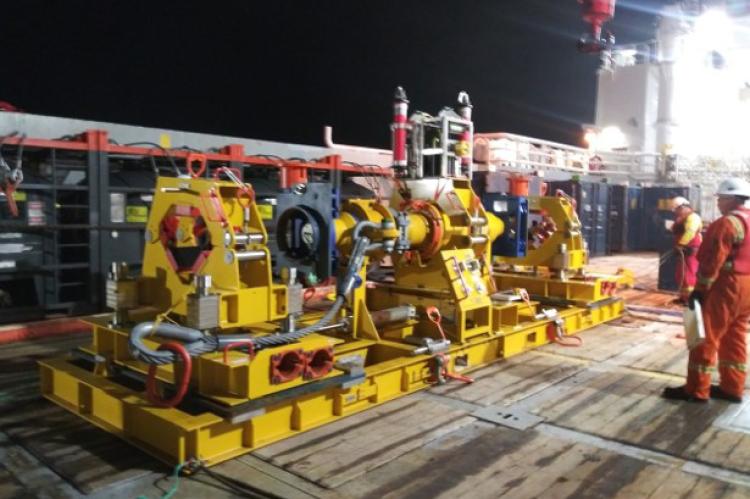Safely repairing subsea flanges on flexible flowlines with a flexible bridging jumper structure

As offshore pipelines age, the oil and gas industry must properly maintain equipment to prevent leaks. In subsea flowlines, leaks sometimes originate from aging flanges. These flanges must be replaced. Historically, replacing the flange has required a lot of time. Different costly approaches are available, from subsea reparations to flowline retrieval topside to carry out repair works Further, such operations have to be carried out in a safe manner to ensure no potential pollutants are released during the repair and that all personnel involved in the activity are safe. A better way to carry out the flange repair subsea was needed.
Oceaneering developed a technology that made it possible to convert and retrofit diver-assisted flexible flowline subsea connections to one that could be made via remotely-operated vehicle (ROV). The method relies on the Flexible Bridging Jumper Structure (FJBS), which connects two jumper ends with the Grayloc® Remotely Operated Clamp Connector. This structure makes it possible to carry out all operations remotely and with less need for support vessels and fewer personnel, which translates directly into safer operations and lower costs. More importantly, the bridging structure combined with the Grayloc® connector minimizes the potential for losing pollutants into the water during the operation.
The FJBS solution has been fully qualified. Factory acceptance testing (FAT) occurred at an Oceaneering facility in Houston, Texas. The FJBS was deployed multiple times following its development in 2016; the second generation of the FJBS was first deployed successfully in South America in 2018.
The system consists of a clamping frame, Z tray assembly, X tray assembly, frame and frame assembly, along with ROV torque buckets to allow for ROV operations. To install the Grayloc® remotely-operable clamp, the FJBS is deployed with a replacement weak link installed. The flowline end fittings are then placed onto the support structure clamp. The pull in cylinders are activated. Following a subsequent seal test on both ends, the alignment skids are retrieved to surface. The FJBS can accommodate different flowline sizes, which reduces the tooling required for each intervention.
